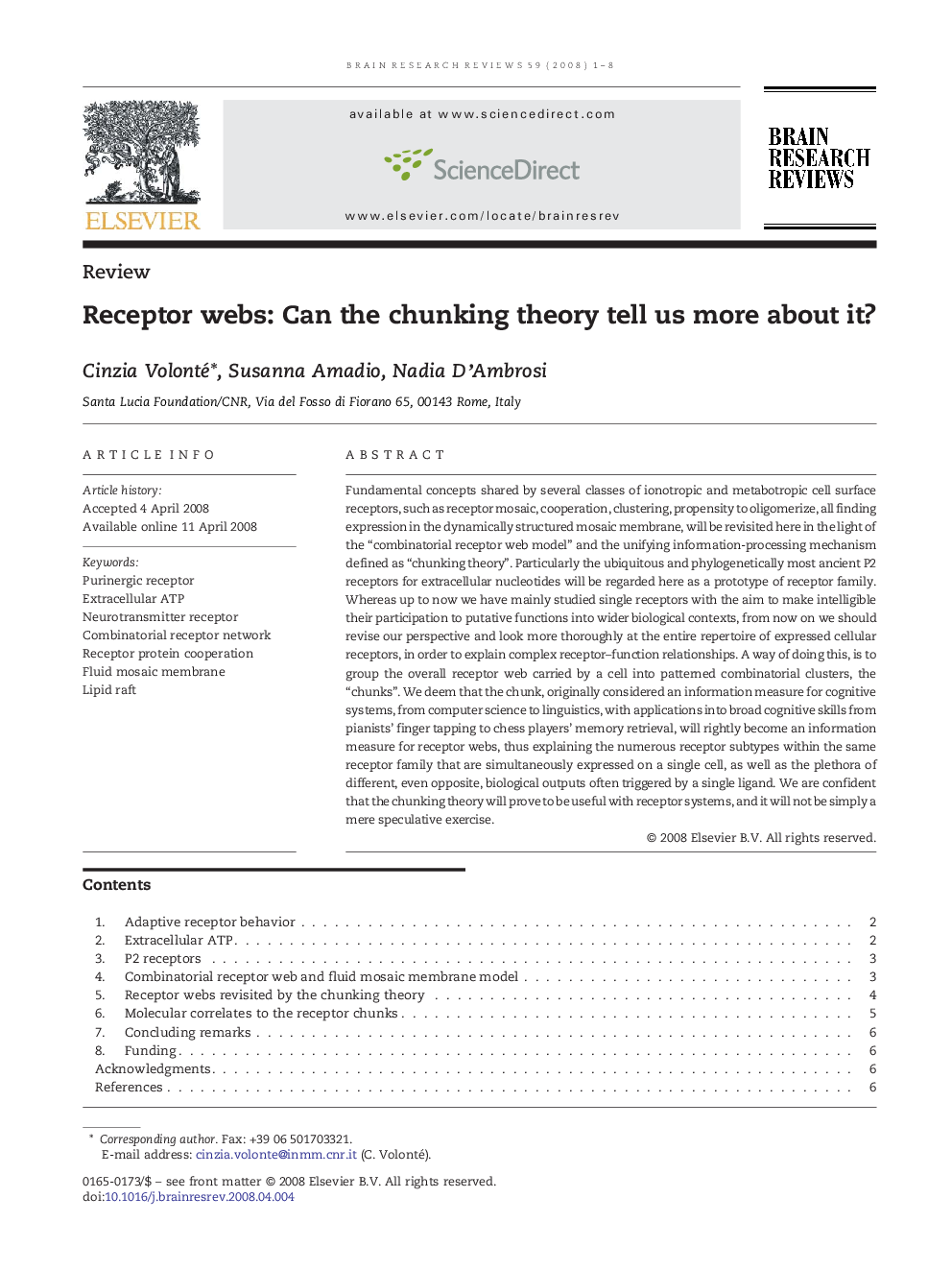| Article ID | Journal | Published Year | Pages | File Type |
|---|---|---|---|---|
| 4333783 | Brain Research Reviews | 2008 | 8 Pages |
Abstract
Fundamental concepts shared by several classes of ionotropic and metabotropic cell surface receptors, such as receptor mosaic, cooperation, clustering, propensity to oligomerize, all finding expression in the dynamically structured mosaic membrane, will be revisited here in the light of the “combinatorial receptor web model” and the unifying information-processing mechanism defined as “chunking theory”. Particularly the ubiquitous and phylogenetically most ancient P2 receptors for extracellular nucleotides will be regarded here as a prototype of receptor family. Whereas up to now we have mainly studied single receptors with the aim to make intelligible their participation to putative functions into wider biological contexts, from now on we should revise our perspective and look more thoroughly at the entire repertoire of expressed cellular receptors, in order to explain complex receptor-function relationships. A way of doing this, is to group the overall receptor web carried by a cell into patterned combinatorial clusters, the “chunks”. We deem that the chunk, originally considered an information measure for cognitive systems, from computer science to linguistics, with applications into broad cognitive skills from pianists' finger tapping to chess players' memory retrieval, will rightly become an information measure for receptor webs, thus explaining the numerous receptor subtypes within the same receptor family that are simultaneously expressed on a single cell, as well as the plethora of different, even opposite, biological outputs often triggered by a single ligand. We are confident that the chunking theory will prove to be useful with receptor systems, and it will not be simply a mere speculative exercise.
Related Topics
Life Sciences
Neuroscience
Neuroscience (General)
Authors
Cinzia Volonté, Susanna Amadio, Nadia D'Ambrosi,
